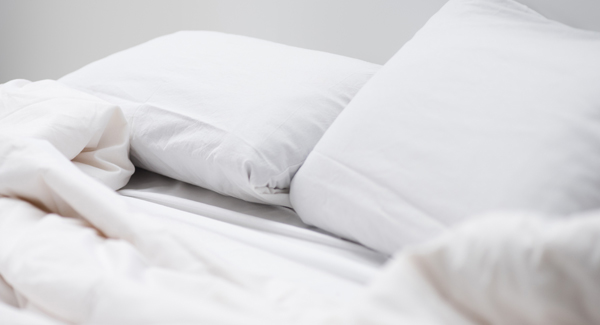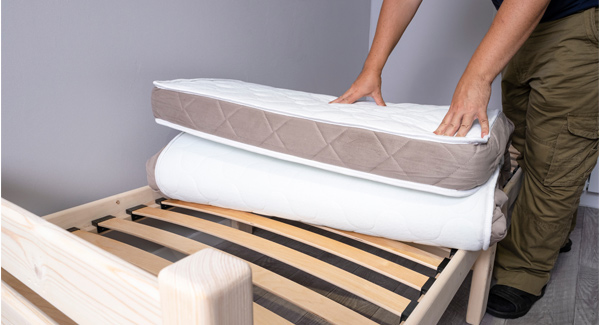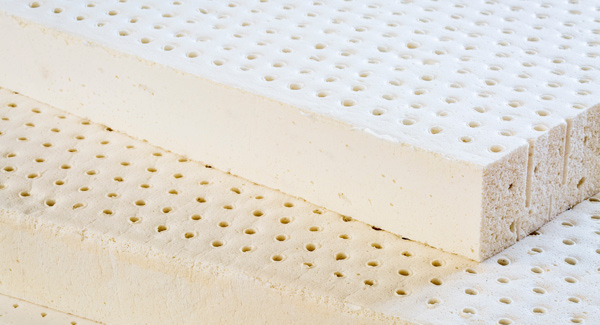Home » Pillow advice » How Often Should You Replace Pillows?
How often should you replace pillows?
Article navigation
- Published:
- Written by: Tony Brown
- Topic: Pillow advice
For some people, their pillows are their pride and joy. Taking them everywhere they go, from travelling on planes and trains to overnight accommodation and even shopping for a new bed and mattress. To others, a pillow is just a pillow, and they undervalue their benefits.
Whether you’re a pillow lover or not, there comes a time when your pillows are past their best, and it’s time to replace them.
How often you should replace your pillows depends on their construction, how often you sleep on them and how you look after them. But, the general recommendation is to replace your pillows every two to four years. This will ensure your pillows remain comfortable and supportive and fresh and hygienic.
Why it’s important to replace your pillows
There are two main reasons why you should replace your pillows. Firstly, a good pillow can help improve your sleep quality by cushioning and supporting your head and neck while helping to keep your body correctly aligned.
But over time, pillows start to lose their shape and flatten as the fillings inside them break down. When this happens, your quality of sleep may begin to suffer. If you find yourself tossing and turning during the night or waking up with a sore neck, it could be that your pillows are causing the problems.
The second reason is for health and hygiene purposes. Every night your pillows absorb sweat, saliva, dirt, dead skin cells and even the oils from your hair and skin. This build-up can quickly create the perfect environment for dust mites and bacteria to thrive.
Since pillows come into contact with your skin, this can cause irritations and acne breakouts. Furthermore, sleeping on an old pillow can trigger allergies like coughing, sneezing and itching.
Washing your pillows regularly may help to alleviate the problem. But old pillows will be filled with germs and bacteria. The best course of action is to replace your pillows once in a while to help maintain a clean and hygienic environment.
What are the signs that it’s time to replace your pillows?
Knowing when to replace your pillows can be a difficult task. But there are a few signs that you can look out for that will tell you when your pillows are past their best.
Your pillows are discoloured
As pillowcases cover your pillows, you may not even consider what they look like underneath. Discolouration of your pillows is part of the ageing process and is usually caused by a build-up of sweat, oils, moisture and other debris in your pillows.
If your pillows are washable, regular cleaning may help remove the stains on your pillows. But, some stains may be permanently set in.
If there is severe discolouration, your pillows will need a closer examination to ensure they are not damp. A humid or damp environment provides the ideal conditions for mould or mildew to grow, which can harm your health.
Unlike your mattress, pillows are inexpensive to replace. So if your pillows are soiled, and you’ve been sleeping on them for a while, it’s best to replace them. This will ensure you’re sleeping in a clean and hygienic environment.
Your pillows are losing their shape
Once pillows begin to lose their shape, they become less comfortable and supportive. Over time, the fillings in your pillows begin to break down. This causes your pillows to go flat, lumpy or misshapen, which affects your sleeping posture.
When your pillows fail to recover or bounce back to their original shape, it’s time to change them.
Your pillows are uncomfortable and no longer supportive
Old pillows can put your head, shoulders and neck out of alignment, resulting in an uncomfortable night’s sleep. The head or neck may settle at an awkward angle during the night, which may cause a sore neck and stiff muscles.
Your pillows may no longer feel supportive because they’ve gone flat, lumpy or misshapen, or because of changes to your body weight or build over time.
Your allergies have worsened
Old pillows will have absorbed a large amount of body moisture, dead skin cells, fluids and debris. This creates the perfect environment for dust mites to thrive, which can trigger allergies.
If your symptoms have worsened over time, your pillows could be the problem, so it’s best to replace them.
Different types of pillows
Pillows come in various types, shapes, sizes and materials. Some are more durable than others, and the pillow’s materials will often determine how long they will last.
Down/feather pillows
Down/feather pillows provide a more luxurious feel. They are breathable and durable. But they do need regular plumping and shaking to restore their loft and ensure the fillings do not clump together over time. Down/feather pillows can last up to four years.
Memory foam pillows
The materials within memory foam pillows can be either solid or loose-filled. They offer excellent durability and tend to last longer than most other pillows. Good-quality memory foam pillows can last up to four years with correct care.
Latex pillows
Latex is a natural material that comes from the sap of rubber trees. It is naturally hypoallergenic and breathable. Like memory foam, latex is a durable material that holds its shape well. If looked after, latex pillows can last up to four years.
Synthetic latex pillows offer a cost-effective alternative but are not as durable.
Polyester pillows
Polyester-filled pillows are an affordable and popular choice of pillows. They are widely available and hypoallergenic, so they are ideal for those that suffer from allergies.
Polyester pillows contain synthetic fillings, which break down quicker than other fillings. They typically have a shorter lifespan than other types of pillows. In general, you should replace polyester pillows every one to two years.
Wool pillows
Wool pillows are naturally hypoallergenic and fully breathable. Wool is a natural material that is soft, resilient and cool to sleep on. Pillows made from wool should last up to 4 years, after which you should replace them for sanitary reasons.
How to extend the life of your pillows
Because pillows come into contact with your skin and affect your sleeping posture, they only have a limited lifespan. But with correct care, you can help them last longer.
Use pillow protectors
Pillow protectors cover your pillows, providing further protection from stains, spillages, bacteria and everyday wear and tear. They come in various sizes and materials. They are often waterproof to prevent liquids from seeping through to your pillows and are breathable to allow air to pass through.
Wash and clean your pillows regularly
Cleaning and washing your pillows will keep them clean, germ-free and help them last longer as well. Before cleaning or washing your pillows, you should always refer to the manufacturer’s care instructions.
Most pillows are machine washable on a gentle cycle and should be washed at least every three months. Foam-filled pillows like memory foam and latex are the exception. There is a risk that soaking or washing these types of pillows can damage the material. But they do usually come with removable covers for cleaning.
Fluff and plump your pillows regularly
Fluffing and plumping your pillows regularly will help them maintain their shape and loft, preventing any uncomfortable dips. It will also ensure your body remains in the correct sleeping position and help you to sleep better.
Final thoughts
We’d all like to keep our old pillows for as long as possible. Over time, pillows become unsanitary, so most sleep experts recommend that you replace them every two to four years.
But knowing the effects your pillows can have on your health and sleep quality, it’s time to up your pillow game and replace your old pillows with new ones.
Learn more

About the author
Tony Brown is the founder and creator of The Bed Consultant. His career in the bed industry began in 2002. After graduating from university with a degree in Business Administration, Tony joined one of the largest independent furniture retailers in the UK as a bed consultant. Tony has helped thousands of customers find the perfect mattress.





